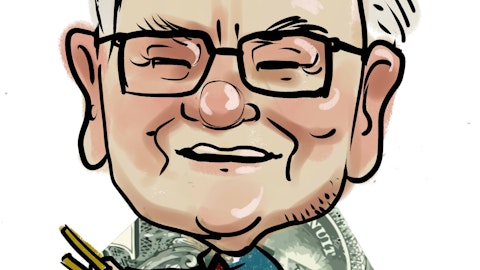On this day in economic and business history …
Exactly 36 years after it was created, the Dow Jones Industrial Average made a number of great changes — or changes that would have been great, if the Dow’s overseers had stuck to their guns. On May 26, 1932, seven new stocks joined the Dow. Only one has remained part of the index ever since: The Procter & Gamble Company (NYSE:PG). Two others — The Coca-Cola Company (NYSE:KO) and International Business Machines Corp. (NYSE:IBM) — were removed far too soon.
Procter & Gamble had an eventful 1932 after joining the Dow. Its soap-making plants shifted to a five-day workweek, founding scion James Norris Gamble passed away at the ripe old age of 95, and it won an award for workplace safety in New York. However, the lowest ebb of the early Great Depression eviscerated The Procter & Gamble Company (NYSE:PG)’s profits, which shrank to a mere $9.1 million in fiscal 1932 from $22.7 million the year before. The company ably recovered from these doldrums, and over the following eight decades its bottom line swelled to $10.76 billion, representing an annualized net income growth rate of 9.3%. The Dow, by comparison, grew at 7.2% per year from the day of P&G’s initiation to its 80-year anniversary.
Coke was coming off the first year of its wildly successful Santa Claus ad campaign in 1932, and despite the recession, shareholders had enjoyed gains of roughly 1,000% since the company’s IPO in 1919. Coke was gone from the Dow by 1935 and wouldn’t rejoin until 1987. This meant that the Dow missed out on a truly remarkable run of returns — had Coke remained with the index for the same uninterrupted 80-year period as The Procter & Gamble Company (NYSE:PG), it would have contributed a seven-digit (2,100,000%) total return to the Dow’s growth.

Between the 1950s and 1979, International Business Machines Corp. (NYSE:IBM) introduced early forms of many computer hardware and software elements we now take for granted. Had IBM never left the Dow, its persistently high stock price and 22,000% return during its absence would have built a Dow worth roughly twice its 1979 value of 840 points. The same can’t be said of IBM’s performance after 1979 — its 900% total return over the two decades that followed actually underperformed the index by roughly 200%.
In some ways, the Dow truly is relevant to the average American investor. Both understand that the key to long-term growth is to find great businesses dominating their industries, but both parties have a tendency (in many cases) to pull the trigger too soon on a sale, or to jump on board a hot stock too close to a peak. And for many smaller-sized portfolios, 30 stocks is a perfectly reasonable number — enough to be diversified, but not so many as to lose track of everything.
A bloodsucker in more ways than one
Bram Stoker’s Dracula was published for the first time on May 26, 1897. Arriving exactly a year after the first publication of Charles Dow’s industrial index, the tale of a charming vampire from Transylvania had a similar effect on pop culture as Dow’s index had on stock market culture. While it wasn’t an immediate best-seller, the novel’s influence on early filmmaking led to an explosion of interest in vampire stories that continues to this day, to the chagrin of many husbands and boyfriends. Stoker’s creation, and the worldwide pop-culture craze it spawned, has added an estimated $10 billion to the economy, according to one “very conservative” estimate by 24/7 Wall Street’s Jon C. Ogg.
The article The Dow Jumps the Gun originally appeared on Fool.com.
Fool contributor Alex Planes holds no financial position in any company mentioned here. Add him on Google+ or follow him on Twitter, @TMFBiggles, for more insight into markets, history, and technology.The Motley Fool recommends Coca-Cola and Procter & Gamble and owns shares of IBM.
Copyright © 1995 – 2013 The Motley Fool, LLC. All rights reserved. The Motley Fool has a disclosure policy.

